Extinct |
| |
| A species that is extinct is gone: there are no known individuals of a given species remaining. |
| |
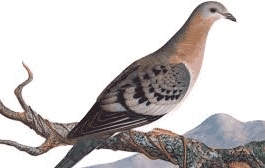 |
The passenger pigeon is an example of a species that is extinct. Billions of these birds once darkened the skies of the Midwest and Great Plains in prodigious flocks. They were easy targets for hunters, however, who could kill dozens with a single gun blast into the sky. The last passenger pigeon, Martha, died in Cincinnati in 1914. |
| |
|
Extinct in the Wild |
| |
|
| There are no known individuals of a given species that remain in the wild. All individuals are in captivity. |
| |
|
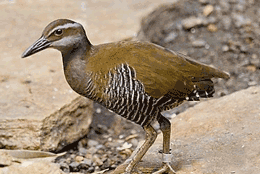 |
The Guam rail is a flightless bird native to the Pacific island of Guam. It is one of only two native forest birds of Guam that still exist. The demise of the Guam rail was caused by invasive species - especially the brown tree snake, which was introduced to Guam accidentally. Feral rats, cats, and pigs, also decimated populations of Guam rails. To protect them from certain extinction, all known rail specimens were taken into captivity. Today, there are about 120 individual birds in captivity in Guam and 35 captive breeding programs initiated by American zoos. The eventual plan is to attempt to reintroduce a portion of the population to Guam. |
| |
|
Critically Endangered |
| |
|
| A species that is critically endangered is at an extremely high risk of extinction. |
| |
|
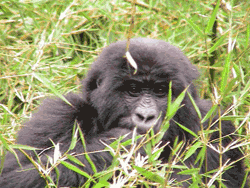 |
As of 2016, there were thought to be only 880 mountain gorillas left in the world. The bulk of the world's population occurs in war-torn Democratic Republic of Congo - where the effects of war, habitat destruction, poaching, and disease have all caused the great primate's severe decline. |
| |
|
Endangered Species |
| |
|
| A species that is endangered is at high risk of extinction in the wild. |
| |
|
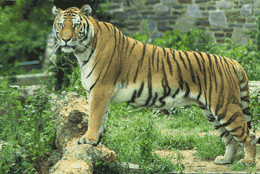 |
The bengal tiger is an endangered species. There are thought to be around 2,500 in the jungles and wetlands of India, Bangladesh, Nepal, and Bhutan. Habitat destruction and poaching have been the primary reason for the big cat's demise. Tiger parts are in high demand in China and fetch huge fees for use in Chinese traditional medicine. |
| |
|
Vulnerable |
| |
|
| A species that is vulnerable is at high risk of becoming endangered. |
| |
|
 |
The loggerhead sea turtle is the world's largest hard-shelled turtle. Populations of this majestic sea creature have declined, however, because of beach development, hunting, and ocean pollution - specifically discarded fishing nets, fishing lines, and plastics. Turtles often mistake plastic bags in the ocean for their favorite prey: jellyfish. Discarded plastic straws can become lodged in the mouths or nostrils of turtles. In addition, beach development has deprived nesting sea turtles of prime nesting sites, forcing them to nest closer to surf, which increases mortality of hatchlings. |
| |
|
Near Threatened |
| |
|
| A species that is near threatened is likely to become endangered in the future |
| |
|
 |
The magnificent harpy eagle is one of the world's largest eagles. Its talons are said to be larger than the claws of a grizzly bear! Populations of the harpy eagle, have fallen drastically over the last few decades. The primary culprit of the eagle's decline is deforestation and habitat destruction. Secondarily, they are killed by ranchers and farmers because they perceive it as a threat to livestock. |
| |
|
Least Concern |
| |
|
| A species of least concern means its numbers are stable and sustainable. |
| |
|
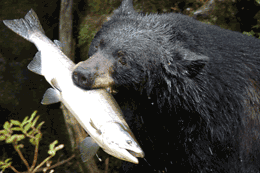 |
Unlike other bear species, the American black bear is common and widespread. They are found throughout much of North America in forested or mountainous habitats. In fact, populations are increasing to the point where they are becoming nuisances to people and even show up in suburban neighborhoods. There may be as many as a million black bears in North America. Because of its stable population, it is classified as of "least concern" by the IUCN. Black bear populations are estimated to be about twice the population of all other kinds of bears combined! |
| |
|
Data Deficient |
| |
|
| Data is lacking to make an accurate classification |
| |
|
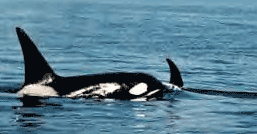 |
The killer whale, or, orca, is a species classified as data deficient. The main reason for this classification is that one or more killer whale types may be separate species. Data Deficient, however, does not imply a species is stable. Some populations of orcas are considered threatened or endangered. Orcas are vulnerable to ocean pollution, oil spills, and sound pollution from sonar. Furthermore, global warming and the depletion of prey sources threaten orcas. |
| |
|
Not Evaluated |
| |
|
| The species has not been evaluated for risk of extinction |
| |
|
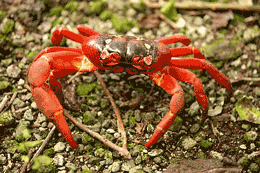 |
The Christmas Island red crab has not yet been evaluated by the IUCN. Species listed as not evaluated may be new species, or, species the organization simply has not gotten to. Each year millions of these crabs cross the island to lay their eggs in the ocean. The continuous stream of millions of red crabs is one of nature's most amazing spectacles. To prevent the crabs from being crushed by cars, crab bridges have been constructed to funnel them to safety. Unfortunately, populations of these crabs have declined dramatically in recent years since the accidental introduction of the yellow crazy ant. |